Current form 12 January 1972 | Conscription No | |
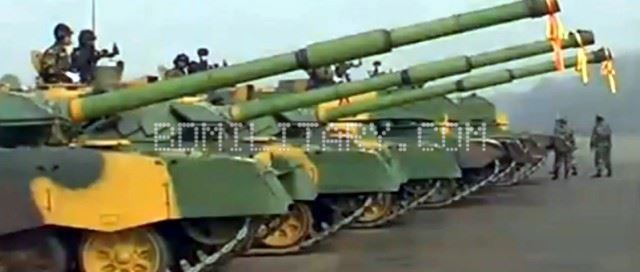 | ||
Motto "চির উন্নত মম শির" (de facto); "Ever High is My Head" Similar | ||
Bangladesh armed forces bangladesh military power 2016 2017
The Bangladesh Armed Forces (Bengali: বাংলাদেশ সশস্ত্র বাহিনী, Bangladesh Sôshôstrô Bahini) consists of the three uniformed military services of Bangladesh: the Bangladesh Army, the Bangladesh Navy and the Bangladesh Air Force. The para-military organization Bangladesh National Cadet Corps (BNCC) is a reserved force & Directed by Army, Navy, Air Force. It is under the command of Defence Ministry. The para-military Border Guard Bangladesh (formerly Bangladesh Rifles) and Bangladesh Coast Guard are under the jurisdiction of the Ministry of Home Affairs during peacetime, but during wartime they fall under the command of Bangladesh Army and Bangladesh Navy respectively.
Contents
- Bangladesh armed forces bangladesh military power 2016 2017
- Bangladesh War of Independence
- BD Forces 1971 Brigades and Regiment Commanders
- Role
- Medals and decorations
- Gallantry awards
- Service Medals
- Current deployments
- Training
- Ranks
- Regular forces
- Para military forces
- Civil forces and reserves
- Specialized forces
- Military districts
- Educational and training institutes
- Training institutes of Bangladeshi Air Force
- Training Institutes of Bangladesh Navy
- Army Cantonments
- Air Force bases
- Navy bases
- References
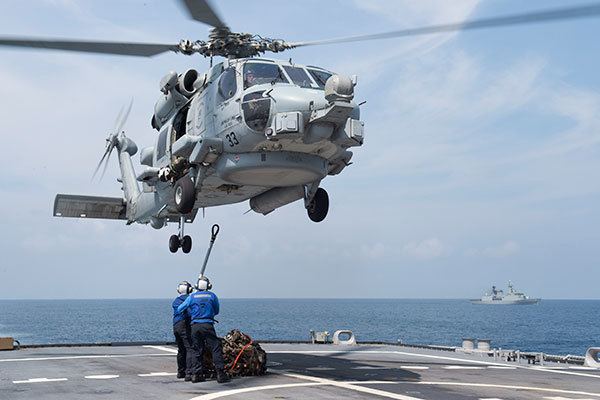
The President of Bangladesh is the Commander-in-chief of the military, the Armed Forces Division (AFD) is the principal administrative organization by which military policy is formulated and executed and the Ministry of Defence (MoD) does not exercise any authority over the Armed Forces and is far less powerful than the AFD. Currently, both AFD and MoD are headed by the Prime Minister of Bangladesh. To coordinate military policy with diplomacy both the President and the Prime Minister are advised by a six-member advisory board, three Chiefs of Staff, which includes the head of each of the regular services, Principal Staff Officer of the Armed Forces Division, and Military Secretaries to the President and the Prime Minister. The Director Generals of the NSI, the DGFI and the BGB also serve in an advisory capacity.
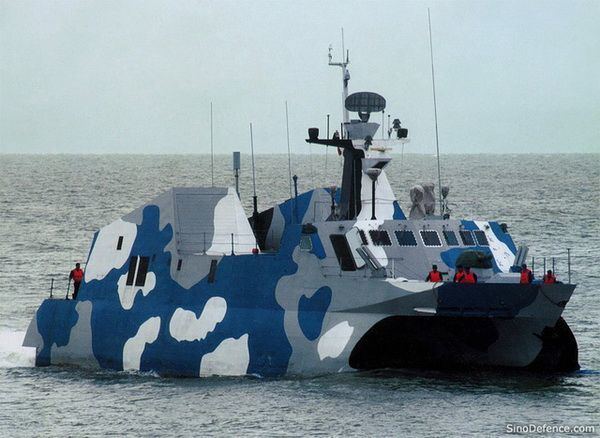
The Armed Forces Day is observed on 21 November. Official functions are held at "Bangabhaban", Dhaka, "Armed Forces Division Headquarters", Dhaka Cantonment, and at every military installation throughout the country.

Bangladesh War of Independence

The modern history of the Bangladesh military began its inception on the night of 25 March 1971 when the Pakistan military launched a brutal attack named Operation Searchlight. On 26 March 1971, Major Ziaur Rahman, 2nd-in-Command of the 8th East Bengal Rgmt. and other Bengali officers organized a revolt and countered the Pakistan army units in Jessore, Chittagong, Kumilla and other areas in East Pakistan. During the early morning hours of 26 March a Major Ziaur Rahman broadcast the official declaration of Independence of Bangladesh as the interim head of the Provincial Bangladesh Government. Later the same day after deliberations a second declaration was also planned. On 27 March Major Ziaur Rahman broadcast the second declaration of Independence on behalf of Sheikh Mujibur Rahman from the captured Kalurghat radio station in Chittagong. Hence, the Independence day of Bangladesh is 26 March. On 4 April 1971 under the command and leadership of the commander-in-chief Colonel M. A. G. Osmani (retd), the Bangladesh Forces began organization and creation with the title of Bangladesh Forces. During the first Bangladesh Sector Commanders Conference (held during 11–17 July 1971) Bangladesh Forces were organized and formed for the ongoing Bangladesh War of Independence from Pakistan. It was significant in the sense that during this historic conference the Bangladesh Forces field command structure, sector reorganization, reinforcement, appointment of field commanders and tactics of warfare were decided upon and carried out. This conference was presided over jointly by the then Prime Minister of Bangladesh Mr. Tajuddin Ahmed and Banga Bir Colonel Muhammad Ataul Gani Osmani Commander in Chief of all Bangladesh Forces. During this conference M.A.G. Osmani was reinstated from retirement to active duty into the Armed Forces of Bangladesh as its senior most official, with the rank of Colonel reactivated. Principal participants of this conference were Principal Military Representative of Bangladesh Government-in-Exile at Chakulia Guerilla Training Camp (Bihar) Squadron Leader M. Hamidullah Khan, BDF Commander Sector 1 Major Ziaur Rahman, BDF Commander Sector 2 Major Khaled Mosharraf, BDF Commander Sector 3 Major K M Shafiullah, BDF Commander Sector 4 Major C R Datta, Major M. A. Jalil, Captain Rafiqul Islam, Lt. Col. Abdur Rab, Wing Commander Khademul Bashar, Major Najmul Haque, Major Mir Shawkat Ali. Lt. Col. Abdur Rab was appointed as Chief of Staff, Bangladesh Army. However, throughout the entire duration of the war Lt. Col. Rab remained in Tripura. During early August at the behest of the Indian authorities Colonel Osmani unwillingly appointed Group Captain A. K. Khandker as Deputy Chief of Staff (Liaison - remained in Calcutta during the entire duration of the war) in place of Group Captain Muhammad Ghulam Tawab, whom Osmani wanted to appoint as his Deputy Commander-in-Chief. Bangladesh was divided into Eleven Sectors under Sector Commanders. For better management of military operations each sector was divided into a combination of sub-sectors, commanded by a Sub-Sector Commander. The 10th Sector was kept under the direct command of the Commander in Chief and included the Naval Commandos as C-in-C’s special operations force. These commandos were later absorbed into the Bangladesh Navy.
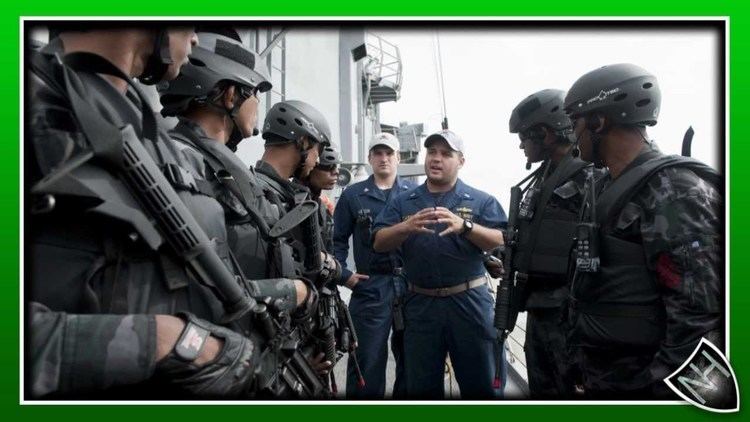
The Bangladesh Forces received tightly measured assistance from the meager resources of the Indian authorities soon after hostilities broke out. The Soviet Union and the US were also drawn in the Cold War politics in the region. The US policy of the Nixon Administration, guided by then US National Security Advisor Henry Kissinger was courting Pakistan to open ties with China, hence could not support the Bangladeshi struggle for independence. However, Nixon's policy did supply emergency relief assistance to India and diplomatic support to Pakistan. The USSR decided to assist India to thwart US influence, eventually supported and immensely strengthened Indian efforts against Pakistan. With Soviet assistance India had planned an aggression and ultimate annexation of East Pakistan. Though a US threat by the Nixon Administration to cut off all aid and assistance stopped the Soviets from doing so keeping India's occupation plans unachieved. Bangladesh's independence struggle gained from the assistance after India initially decided to support the official Bangladesh government and BD Forces, but also tacitly trained and supplied pro-Indian militia's Mujib Bahini, Hemayet Bahini and Kaderia Bahini collectively broadcast as "Multi Bahini" by the RAW propaganda unit, Free Bangla Radio Network(Shadhin Bangla Betar Kendra), in Calcutta. Elements of the Mukti Bahini was assisted with planning, training and arms towards achieving other targeted goals of loot and sabotage and clandestine operations under the direction and guidance of RAW chief R. N. Kao and SFF Inspector General Major General Sujat Singh Uban. The support to BD Forces culminated under the security umbrella provided by the Indo-Soviet Friendship Treaty of August 1971.
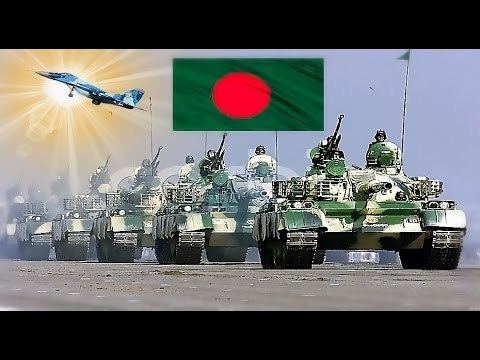
On 21 November 1971, when the natural climate was dry and more adaptable and by which time the Bangladesh Forces had severely weakened the strength of the West Pakistan Forces through its guerilla operations, under a complicated politico-military scenario, a demand of the Indian government was conceded to by the Bangladesh Government-in-exile in Calcutta, which was handing over the full command and authority of its operations to the Indian armed forces. The Pakistani force had already suffered massive casualty from constant attacks by the BD Forces and was on the verge of collapse, they readily agreed to a cease fire without resistance in about one and a half weeks, on 16 December 1971. However, the cease fire was switched into a surrender document. The Bangladesh Forces C-in-C Colonel M.A.G. Osmani and almost every member of the Bangladesh Forces, Sector Commanders who organized and led the war including Brigade K, and Z Force Commanders were barred from attending. Freelance journalists, ambassadors, or other diplomats, the press, civilian representatives were barred from attending. Group Captain A. K. Khandker, the lone BD Forces non combatant staff member, managed to tag along with the Indian entourage and witnessed the show and returned to Kalyani, Calcutta, back on the same day with them. K M Shafiullah, S Force commander, and a handful of others were also among the hundreds of local masses who surrounded the event from a distance. "No protocol was set on what they were supposed to do". A fact Shafiullah admitted himself. "We rushed to the Race Course from the airport. I was a member of Bangladesh delegation. But we were not sure what we were supposed to do. I was standing in front of the signing table. That's why I do not appear in any photographs. There was rejoicing all around. We put Niazi on a jeep and sent him away. That night I did not come across anyone." -Major General Shafiullah spoke to Kaushik Sankar Das.
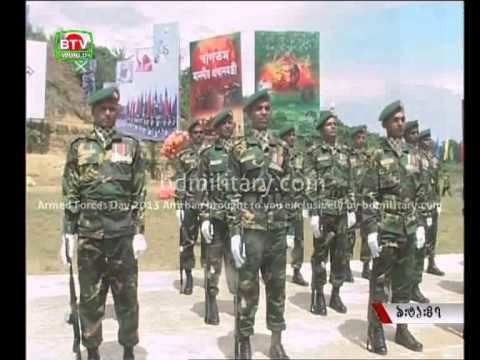
Victory was declared by the Indian authorities. All 93,000 prisoners of war and a massive amount of captured war materials were taken to India. Colonel Osmani and a few sector commanders arrived in Dhaka a day later, and set up the former Pakistan Army 14 Div HQ's, w.e.f 17 December 1971, as BD Forces Command Headquarters, at Dhaka Cantonment which remained operational until 14 February 1972. All closures and accounts were conducted from Osmani's C-in-C HQ at Dhaka Cantonment. Group Captain Muhammad Ghulam Tawab was appointed Osmani's first Deputy Commander in Chief after being able to return from Bangkok, Thailand on 17 December 1971. General Osmani and his deputy Group Captain Muhammad Ghulam Tawab remained in command of BD Forces until 7 April 1972. However, due to internal politics conspired and spearheaded by Group Captain A.K. Khandker and members of the Awami League who resurfaced from Calcutta, India, almost more than a month after the war ended, managed to remove Tawab entirely from service in Bangladesh government later. Bangladesh Forces were ordered on 29 January 1972 for demobilization of all sectors by end of March under the direction of the newly Indian army installed Mujib government. General M. A. G. Osmani held the final Sector Commanders Conference at the old Police HQ bldg. at 27 Mintu Road, Dhaka. All sectors were abruptly shut down. No official accounts of war wounded, gallantry investigations, or weapons collection were done. Independent Bangladesh remained under Indian army occupation and total control for another three months after the war, with an ICS and an Indian army official in every official entity of the Bangladesh government. US President Nixon made clear to the Indians that they must leave Bangladeshi soil before any international recognition or assistance. Quickly realising this as a critical situation, Sheikh Mujibur Rahman made a unilateral public demand to Indira Gandhi regarding the absolute, unconditional, and unequivocal withdrawal of all Indian officials and forces from Bangladesh. India withdrew its personnel within 2 days 17 to 19 March 1972.
The Bangladesh Forces was organized for the War of Independence in 1971 under 11 (eleven) sectors and subsequently into three brigade size commands with ultimately only one being fully operational and organized, Z Force.
BDF HQQ's 8 Theatre Road, Calcutta, India.
Prime Minister: Mr. Tajuddin Ahmad
BD Forces C-in-C: Colonel Muhammad Ataul Gani Osmani (Appointed General 1972)
BD Forces Principal Military Representative: Chakulia Guerilla Training Camp (Bihar) – Squadron Leader M. Hamidullah Khan(Until June)
BD Forces Deputy C-in-C Group Captain Muhammad Ghulam Tawab (17 Dec 1971 ~ 7 April 1972)
BD Government Non-Combatant Staff :
BD Forces Military Secretary to C-in-C Major Chowdhury
BD Forces ADC to C-in-C Captain Noor
BD Forces PSO I to C-in-C – Administration and Personnel
BD Forces PSO II to C-in-C – Operations and Training
BD Forces Chief of Army Staff Lt. Col. M. A. Rab (HQ Tripura)
BD Forces Deputy Chief of Staff(Liaison) Group Captain A.K. Khandker (Kalyani Bldg.)
BD Forces 1971 Brigades and Regiment Commanders
Role
The Bangladesh Forces fully structured by September 1971, organized itself officially as the Bangladesh Armed Forces comprising Bangladesh Army, Bangladesh Navy and Bangladesh Air Force. The current strength of Bangladesh Army is estimated to be more than 152000 personnel, while Bangladesh Air Force consists of more than 14,000 personnel and Bangladesh Navy with 18,000 personnel [1]. The forces perform traditional military missions. The Bangladesh Coast Guard under the Home Ministry, plays a stronger role in the area of anti-smuggling, anti-piracy, and protection of offshore resources. Recognition of economic and fiscal constraints has led to the establishment of several paramilitary and auxiliary forces, including the 35,000 member Border Guard Bangladesh and the 4,000 member Ansars and Village Defence Parties Organization. The Border Guards Bangladesh, under the Home Ministry, are commanded by army officers who are seconded to the organization.
In addition to traditional defense roles, the military has been called on to provide support to civil authorities for disaster relief and internal security. The military of Bangladesh fought tribal insurgents in Chittagong Hill Tracts since mid-1970s. In November 2008, Bangladesh Navy effectively staved off economic aggression by Myanmar in the seas of Bangladesh. Occasionally the military forces have been called to participate in social activities like rehabilitation of people following a flood or cyclone. Since late 1980s, it has earned international reputation by working as part of United Nations peacekeeping Missions in different countries of the world. The Bangladesh military is recognized as a disciplined and well-trained national institution that can tackle critical national phases. A 2,300-member Bangladesh Army contingent served with coalition forces during the 1991 Gulf war. Bangladesh is currently the second highest contributor (with 7941 troops, as of October 2013) to United Nations peacekeeping operations, with an infantry battalion in UNIKOM (Kuwait), an engineer battalion in UNTAET, (East Timor) and another infantry battalion service in Sierra Leone in May 2000.
Medals and decorations
The following are the various gallantry, service and war medals of the Bangladesh Armed Forces.
Gallantry awards
Service Medals
Current deployments
Bangladesh has consistently made large contributions to United Nations peacekeeping operations. As of May 2007, Bangladesh had major deployments in Democratic Republic of Congo, Liberia, Lebanon, Sudan, Timor-Leste and Cote d'Ivoire. With 10,736 troops deployed, it ranks first in personnel contributions to UN peacekeeping. The government declined to participate in Iraq on a request from the United States. The deployment to Liberia began in October 2003 and has remained at a level of about 3200 who are participating in peacekeeping, charitable activities and infrastructure development.
Training
Officers are trained and educated for two and a half years at the Bangladesh Military Academy, Bhatiary, Bangladesh Naval Academy at Patenga, both located in Chittagong and Bangladesh Air Force Academy located in Jessore. For advance training during their career, officers are sent to Bangladesh Defence Services Command and Staff College at Mirpur, while senior officers attend the National Defense University for Armed Forces War Course. Many attend the Military Institute of Science and Technology while serving. Officers of the Army Medical Corps are recruited after graduation from civil medical colleges. They undergo basic military training at Bangladesh Military Academy followed by professional training in medical corps centre and Armed Forces Medical Institute. Recently cadets of Armed Forces Medical College also started joining the services directly.
Ranks
Bangladesh military ranks, essentially corresponds to those used by the armed forces of the commonwealth nations.
There are three different systems of rank for commissioned officers of the Bangladesh Army, Bangladesh Navy and Bangladesh Air Force. The Para-military force Border Guards Bangladesh follows the same rank structure as the Bangladesh Army. Bangladesh Coast Guard follows the naval rank structure.
The first officer to hold the rank of General in the Bangladesh Armed Forces was Muhammad Ataul Gani Osmani, Commander-in-Chief of Bangladesh Forces in 1972. He was reinstated into active duty and officially appointed as C-in-C Bangladesh Forces. Min. of Defence Notification of his release – No. 01/17/72(NGO) 108 DEF/SECY-7 April 1972/// With intention to effectively participate in the proceedings of the Constituent Assembly as an MCA, General M.A.G. Osmani, Psc, resigned his appointment as C-in-C Bangladesh Forces and such order to be extended to the dissolve and decommission of all 11 BDF Sectors and subordinate units; his resignation having been accepted by the President, he vacated his temporary appointment of C-in-C Bangladesh Armed Forces w.e.f. 7 April 1972(forenoon) and his offices at (OLD) 14 Division Headquarters at Dhaka Cantonment. Accordingly, he is reverted to the MOD Pension List from the same date henceforth. NO.01-31-33/72-110(3) DEF/SECY-7 April 1972 (forenoon)//With the vacation of the temporary Appointment of C-in-C of Bangladesh Forces, the combined command of Bangladesh Armed Forces has been abolished and all its operations ceased w.e.f. 7 April (forenoon) and replaced by the three separate forces of the Bangladesh Army, Bangladesh Navy and Bangladesh Air Force under the Ministry of Defence, while Border Guards Bangladesh and Bangladesh Coast Guard are under the authority of Ministry of Home Affairs. Following this Memorandum, the appointment of three acting Chiefs of Staff of the Armed Services will take effect immediately until further orders.
Regular forces
Para-military forces
Civil forces and reserves
Specialized forces
Military districts
Dhaka Cantonment
Educational and training institutes
Training institutes of Bangladeshi Air Force
Training Institutes of Bangladesh Navy
Army Cantonments
Cantonments are where Bangladesh Army personnel work, train, and live.
